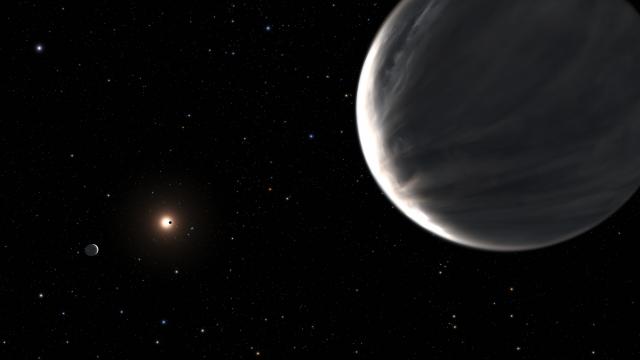Astronomers using the Hubble Space Telescope have observed two exoplanets that may be examples of a long-hypothesised planetary classification: a water world.
The planets are known as Kepler-138c and Kepler-138d and are located in a star system 218 light-years away, according to a release from the European Space Agency. The team, led by Caroline Piaulet of the Institute for Research on Exoplanets at the University of Montreal, used data from Hubble as well as NASA’s Spitzer Space Telescope to determine that the worlds are largely water, making them even wetter than our famously wet home planet. Their findings are published in Nature Astronomy.
“We previously thought that planets that were a bit larger than Earth were big balls of metal and rock, like scaled-up versions of Earth, and that’s why we called them super-Earths,” said Björn Benneke, one of the study authors, in the ESA release. “However, we have now shown that these two planets, Kepler-138c and d, are quite different in nature and that a large fraction of their entire volume is likely composed of water.”
Kepler-138c and Kepler-138d are estimated to be approximately three times the size of Earth and double our own planet’s mass, but with much lower densities.
The research team didn’t directly observe water on the planets, but by comparing the observation data to pre-existing models, they found that they should consist of materials with a density between the gases hydrogen and helium and rock — and the likely candidate is water. With that said, the researchers believe these planets could have incredibly hot atmospheres, meaning their surfaces might not be teeming with vast liquid oceans.
“The temperature in Kepler-138d’s atmosphere is likely above the boiling point of water, and we expect a thick dense atmosphere made of steam on this planet,” said Piaulet. “Only under that steam atmosphere could there potentially be liquid water at high pressure, or even water in another phase that occurs at high pressures, called a supercritical fluid.”
Some of the first direct evidence for the existence of water worlds was found 2012, but subsequent observations have been hard to come by. A study in 2017 suggested that these water worlds could make up a large percentage of potentially habitable exoplanets. Other research in 2019 found that exoplanets larger than Earth — like the Kepler-138 planets — could likely be water worlds with incredibly deep oceans.
While the recent findings are exciting, the research team is looking forward to follow-up work using the Webb Space Telescope to further study the atmospheres of Kepler-138c and d.
